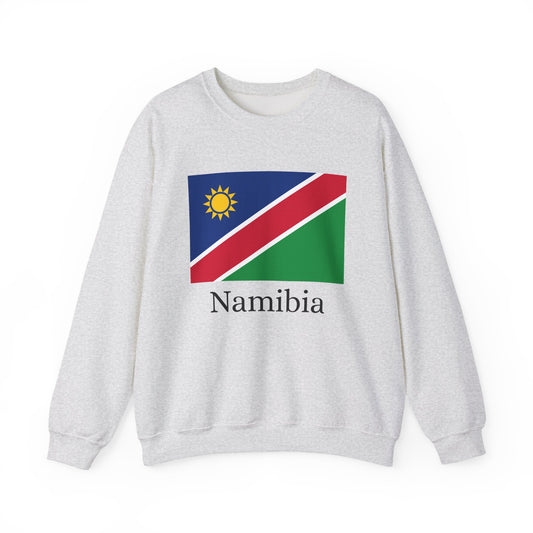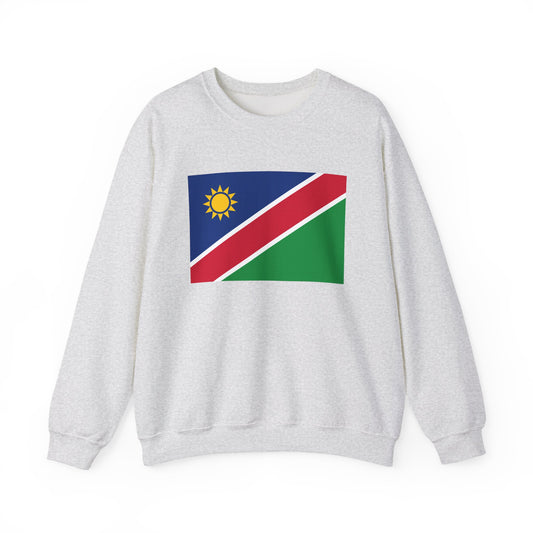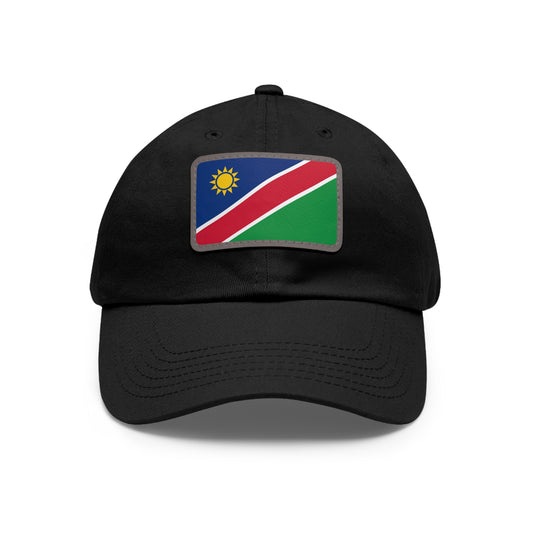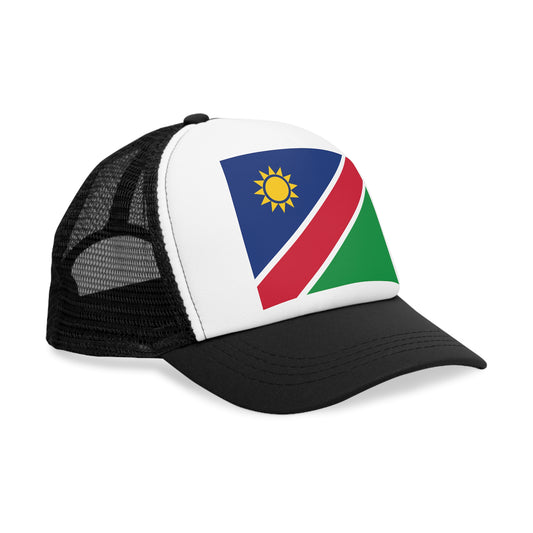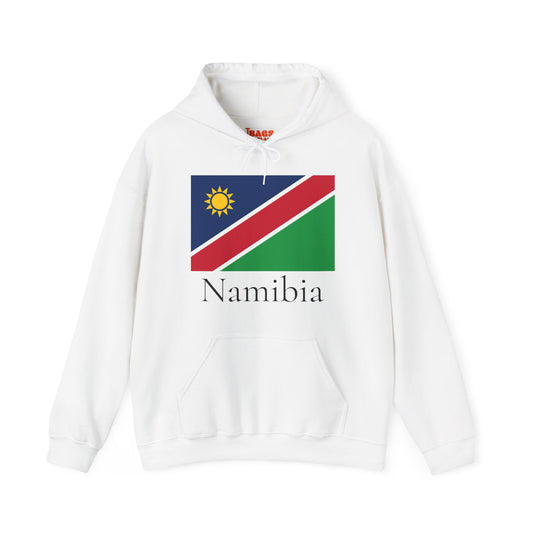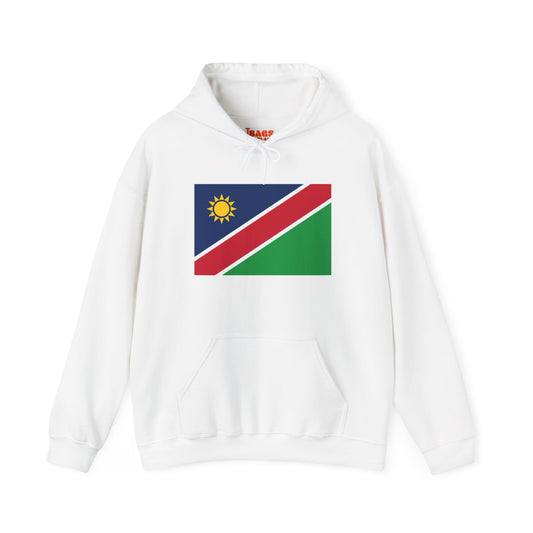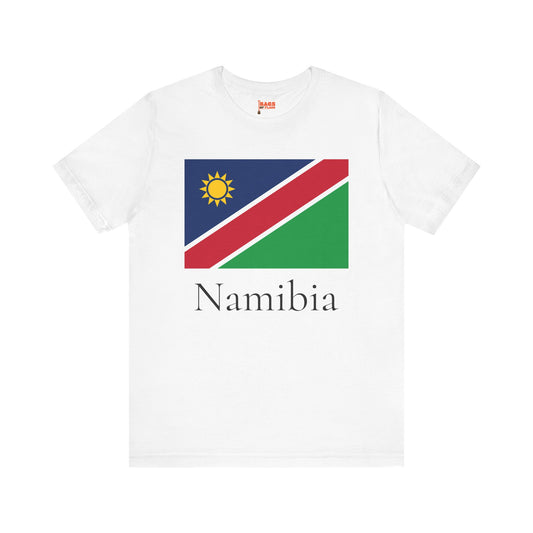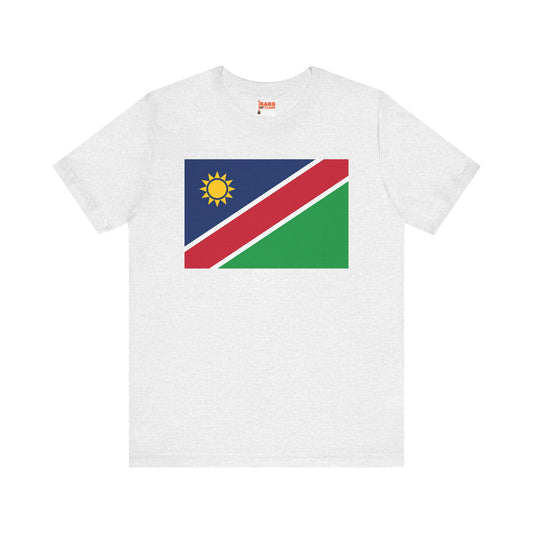-
Namibia Sweatshirt
Regular price $34.15 USDRegular priceUnit price / per -
Namibia Flag Sweatshirt
Regular price $34.15 USDRegular priceUnit price / per -
Namibia Pillow
Regular price $22.65 USDRegular priceUnit price / per -
Namibia Backpack
Regular price $59.79 USDRegular priceUnit price / per -
Namibia Leather Patch Hat
Regular price $18.85 USDRegular priceUnit price / per -
Namibia Mug
Regular price $11.65 USDRegular priceUnit price / per -
Namibia Trucker Cap
Regular price $14.90 USDRegular priceUnit price / per -
Namibia Hoodies
Regular price $34.40 USDRegular priceUnit price / per -
Namibia Flag Hoodies
Regular price $34.40 USDRegular priceUnit price / per -
Namibia T-shirts
Regular price $22.79 USDRegular priceUnit price / per -
Namibia Flag on T-shirt
Regular price $22.79 USDRegular priceUnit price / per
Collection: Namibia
The Namibia flag, also known as the flag of Namibia, holds a rich history and symbolism that reflects the nation's past and present. From its unique design to the colors that represent its people, the flag of Namibia is a powerful symbol of national identity. We will explore the fascinating story behind the Namibia flag, including its design, historical context, symbolism, current relevance, and additional facts that make it a significant country emblem.
Overview of the Namibia Flag Design and Colors

At the heart of the Namibian identity, the national flag presents a striking diagonal blue, red, and green tricolor. These bands sweep across the flag from the bottom hoist side corner to the upper fly side, symbolizing the country’s aspirations, natural riches, and commitment to progress. The vivid blue represents the sky and the Atlantic Ocean, highlighting Namibia’s connection to its environment and openness.
The bold red echoes the determination and resilience of its people, striving for equality and unity. Green represents the fertility of the land, underlining the importance of agriculture and the country's natural resources. Centered on this dynamic background is a sun in gold with 12 triangular rays encased within a white-bordered red rectangle. This sun is more than a celestial body; it is a beacon of hope and life, a source of energy, and a symbol of the warmth and potential of the Namibian people. Each design element weaves a story of freedom, unity, and aspiration, making the flag a profound emblem of the nation’s identity and values.
Historical Context of the Namibia Flag
The Namibia flag was officially adopted on March 21, 1990, marking a pivotal moment in the country's journey toward independence. This date is not just a mere point in history; it signifies Namibia's emancipation from South African rule, achieved after a protracted struggle for freedom and sovereignty. The flag itself was the outcome of a national competition that sought to encapsulate the spirit of the nation in its design. Among numerous submissions, the design proposed by Theo Jankowski stood out and was ultimately selected to represent the new era of independence.
This transition period from apartheid to self-governance was marked by a collective desire to forge a unified national identity, which the new flag was meant to embody. Its adoption symbolized a break from the past and an optimistic look toward a future filled with hope, unity, and self-determination. The introduction of the flag coincided with the establishment of the Republic of Namibia, heralding the beginning of a new chapter in the country's history, characterized by peace, progress, and the promise of equality for all its citizens.
Symbolism Behind the Namibia Flag

The Namibia flag is imbued with profound symbolism, each color and element carefully chosen to represent the nation's ideals, natural environment, and people. The striking blue reflects the sky and the Atlantic Ocean, emphasizing the importance of freedom and Namibia's connection to the natural world. Red stands for the Namibian people's heroism and determination to build a future based on equal opportunity for all. At the same time, green symbolizes the fertility of the land, an essential aspect of the nation's wealth and sustainability.
With its 12 triangular rays, the gold sun is central to the flag's design, a powerful symbol of hope, warmth, and energy. This sun is particularly significant as it represents the unity and equality of the 12 major ethnic groups that comprise the Namibian population, highlighting the country’s commitment to harmony and inclusiveness. Together, these elements convey a message of optimism, resilience, and the collective aspiration of the Namibian people towards a prosperous future.
Current Relevance of the Namibia Flag
Today, the Namibia flag serves as a beacon of national pride, widely recognized locally and internationally. It holds a prominent place in all national events, from independence celebrations to significant political milestones, symbolizing the unity and strength of the Namibian people. The flag is revered in military ceremonies, signifying honor and the sacrifices made for the country’s freedom. During national holidays, such as Heroes' Day, the flag is displayed prominently, fostering a sense of patriotism among citizens. It also graces international sports arenas, carried by Namibian athletes, showcasing the country's spirit and identity on a global stage. Despite debates over its symbolism and whether it fully represents Namibia's cultural diversity, the flag continues to be a source of national pride. Its daily presence in the lives of Namibians, from government buildings to educational institutions, cements its role as an enduring symbol of the nation's aspirations, heritage, and unity.
Additional Facts About the Namibia Flag
The Namibia flag, steeped in symbolism and national pride, is governed by etiquette rules designed to maintain its dignity and respect. Among these, it is paramount that the flag never makes contact with the ground, a practice observed to preserve its sanctity. Additionally, displaying the flag in an inverted position is considered improper, reflecting the importance of the correct presentation in symbolizing national integrity. The protocol extends to the ceremonial raising and lowering of the flag, which is conducted with precision at sunrise and sunset. This practice reinforces the nation’s respect for its emblem. Observers of this ritual are expected to show their respect by standing and saluting, a gesture that underscores the collective honor and pride felt towards the national symbol.
An interesting piece of trivia about the Namibia flag is linked to its creation process. The design, selected through a national competition, was the brainchild of Theo Jankowski, whose vision for the flag was inspired by Namibia’s vast natural beauty and rich cultural tapestry. This creative inspiration is evident in the flag's harmonious blend of colors and symbols, each chosen to reflect the nation's identity and aspirations. Beyond its formalities and origins, the Namibia flag also carries with it stories of unity and hope, resonating with Namibians and admirers worldwide. Through these protocols and tales, the flag not only symbolizes national sovereignty but also embodies the spirit and pride of the Namibian people.


